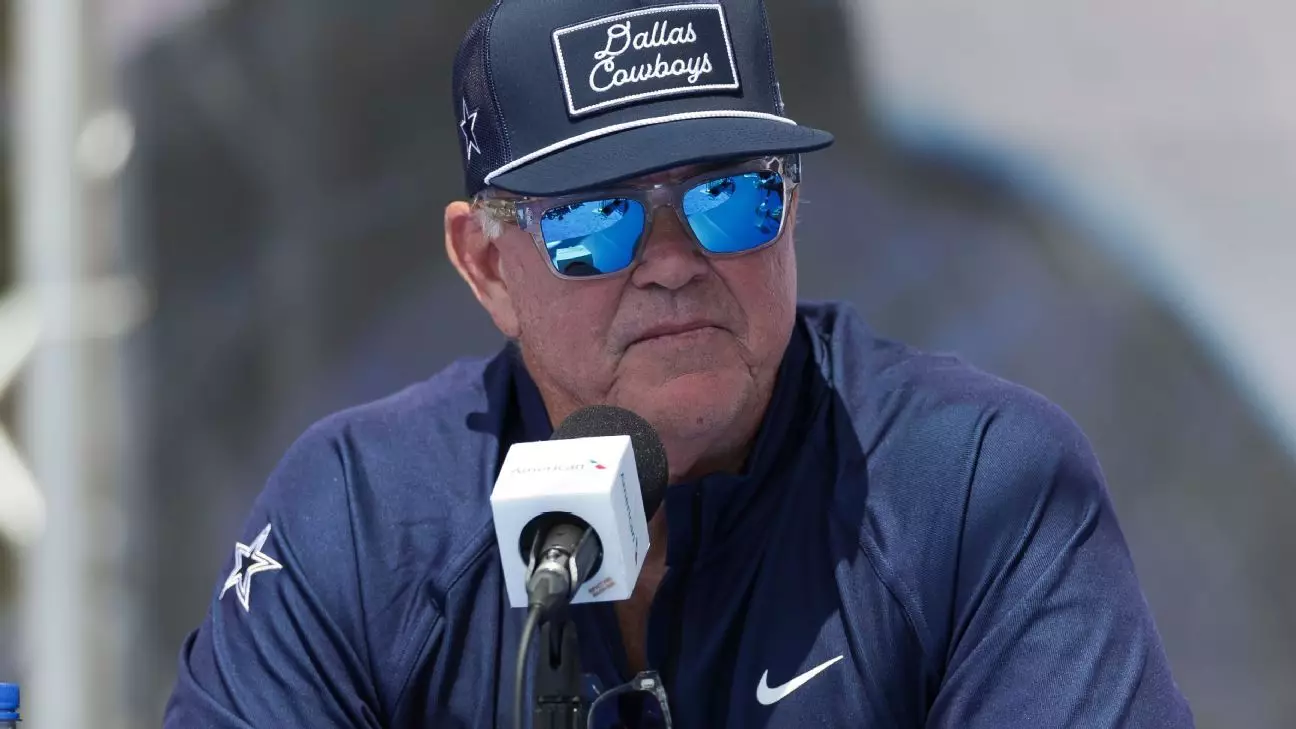The Dallas Cowboys have long been a franchise synonymous with high expectations and bold moves. Last year’s mantra of “all-in” under the guidance of owner Jerry Jones set a tone of urgency and comprehensive commitment to talent acquisition. However, as the NFL scouting combine unfolds, the team’s leadership is now embracing a new philosophy for the 2025 season—one that’s been dubbed “selectively aggressive.” This shift indicates a nuanced approach to roster management, suggesting a blend of caution and ambition that could shape the team’s future in profound ways.
At the helm of this change is Stephen Jones, the team’s executive vice president, who articulated this new direction by acknowledging the need to prioritize essential roster needs prior to the draft. This method harkens back to pre-2024 strategies where the Cowboys aimed to address critical vacancies before the NFL draft, allowing them to seize the best available talent without being constrained by immediate positional needs. Acknowledging inconsistencies in achieving this goal in the previous cycle, Jones emphasizes the need for adaptability in assessing both free agency and draft prospects.
Central to the Cowboys’ upcoming strategy is the imperative to sign All-Pro pass rusher Micah Parsons to a long-term extension. Parsons, set to play on a fifth-year option that nets him around $21 million, is poised to seek a contract that could establish him as the highest-paid defensive player in the league, with current benchmarks hitting $34 million annually. Unlike last season, where key negotiations for players like Dak Prescott and CeeDee Lamb dragged into late summer, the organization hopes to expedite this process for Parsons.
The Cowboys’ historical approach to contract negotiations may lend itself to a smoother discussion this time around, given the organization’s experience in managing high-stakes deals. Stephen Jones maintains a level of optimism but does suggest that the particulars of negotiations could influence the timeline. He recognizes that Parsons’ deal could differ fundamentally from CeeDee Lamb’s situation last year, which was affected by market dynamics as other wide receivers sought their extensions.
While Parsons remains a focal point, the Cowboys also have other pressing contract considerations. Defensive tackle Osa Odighizuwa’s long-term deal is under discussion; however, the Cowboys have refrained from revealing their potential tactics regarding franchise or transition tags. The current negotiations reflect the intricate balancing act that lies ahead for the front office, especially as they weigh familiar faces against newcomers.
The Cowboys’ executive team will soon face decisions concerning a host of soon-to-be free agents. The potential retirement of Zack Martin looms large, creating the possibility that defensive end DeMarcus Lawrence could become the longest-tenured Cowboy should he re-sign. Lawrence has been a cornerstone of the Cowboys’ defense for years, and the organization seems committed to retaining him if his intentions align.
The financial implications of the new NFL salary cap, projected to rise between $277.5 million and $281.5 million, afford the Cowboys some breathing room. This increase represents a strategic opportunity for the organization to revisit and potentially restructure lucrative contracts held by key players like Dak Prescott and CeeDee Lamb. By creating around $57 million in cap space through restructuring these contracts, the Cowboys could enhance their ability to pursue other players, either retaining their own free agents or exploring external additions.
This flexibility may empower the team to act on their “selectively aggressive” approach. By analyzing both internal and external opportunities, the Cowboys can potentially fortify their roster without overly committing to any single player or strategy. Stephen Jones reflects this sentiment, indicating that every available resource will be explored to bolster the team’s competitiveness.
The Dallas Cowboys are entering a pivotal offseason defined by an adaptative strategy. The move from an “all-in” mindset to one that is considered “selectively aggressive” underscores a calculated approach aimed at addressing team needs while still maintaining flexibility in contract management. As the organization navigates through vital negotiations with several key players, the balance between aggressiveness in free agency and prudence in roster valuation will be critical. This evolving philosophy highlights a broader trend in the NFL where franchises are increasingly blending ambition with strategic restraint—ultimately aiming for long-term success rather than momentary glory.

